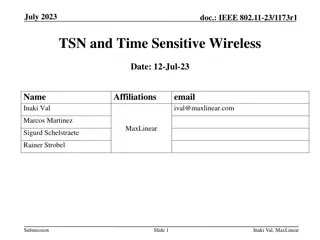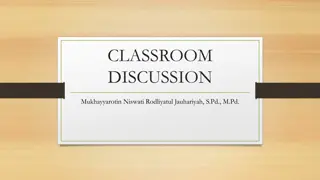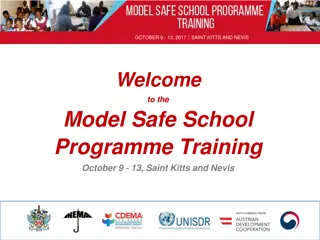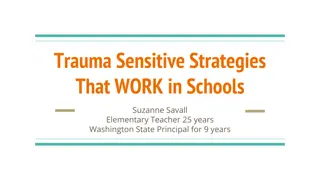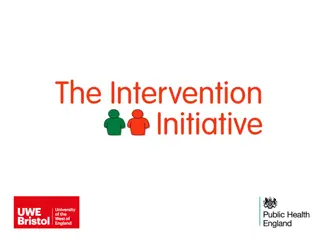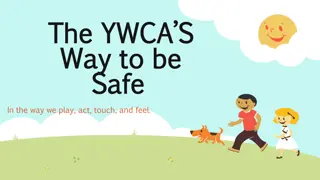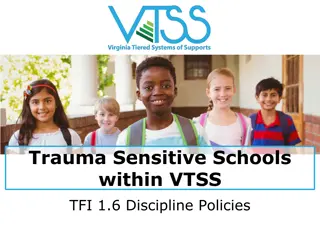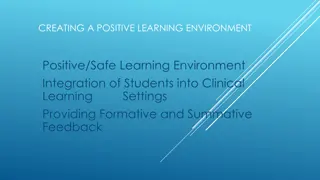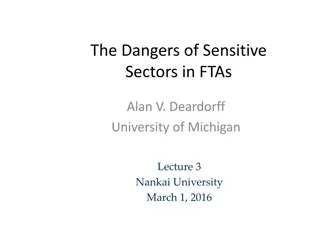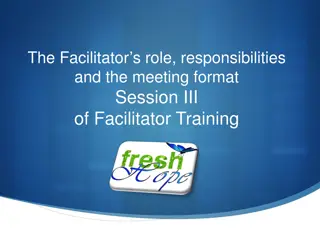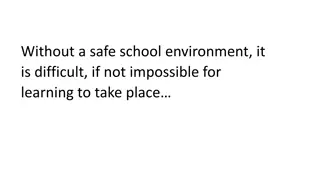Creating a Safe Learning Environment for Sensitive Discussions
In this programme, we will learn and work together as a group on sensitive topics. It is essential to maintain confidentiality, use appropriate language, attend sessions, and communicate respectfully. Participants may choose to leave if they feel uncomfortable. The content includes experiential and didactic learning, with stages like safe space, scripted role plays, and case studies. Bystander intervention is crucial in scenarios like the one described. Training facilitators are available to help anyone in distress.
Download Presentation

Please find below an Image/Link to download the presentation.
The content on the website is provided AS IS for your information and personal use only. It may not be sold, licensed, or shared on other websites without obtaining consent from the author.If you encounter any issues during the download, it is possible that the publisher has removed the file from their server.
You are allowed to download the files provided on this website for personal or commercial use, subject to the condition that they are used lawfully. All files are the property of their respective owners.
The content on the website is provided AS IS for your information and personal use only. It may not be sold, licensed, or shared on other websites without obtaining consent from the author.
E N D
Presentation Transcript
We will learn & work together as a group in this programme. Some of the material is sensitive & some of us will have personal experience of the things we discuss. We will all be respectful of personal emotions as we learn. Confidentiality Appropriate language Attendance Communicating with the facilitator Please be aware that we will be discussing sensitive issues that might have affected you or people you care about. If you feel uncomfortable or upset it is fine to leave the space. Facilitators will understand & are trained to help you.
I want to intervene This is not okay, you need to stop this now
Two kinds of learning Experiential (Practical) Didactic
Stages Safe Space Scripted Role Play Case Studies (improvising)
We will learn & work together as a group in this programme. Some of the material is sensitive & some of us will have personal experience of the things we discuss. We will all be respectful of personal emotions as we learn. Confidentiality Appropriate language Attendance Communicating with the facilitator Please be aware that we will be discussing sensitive issues that might have affected you or people you care about. If you feel uncomfortable or upset it is fine to leave the space. Facilitators will understand & are trained to help you.
Unconscious on the sofa A group of 8 male students have been out drinking. They return to their shared house with friends and continue drinking. One of the men passes out unconscious, lying face down on the sofa. One of the party encourages the group to pull down his trousers and underwear. A marker pen is produced, intending to draw a face on the man s buttocks. It will be suggested that a straw should be used for a nose of the face, and the straw should be inserted into the unconscious man s anus and photographs/a video taken. These can then be published online for a laugh.
Intervention Points A group of 8 male students have been out drinking. They return to their shared house with friends and continue drinking. One of the men passes out unconscious, lying face down on the sofa. One of the party encourages the group to pull down his trousers and underwear. A marker pen is produced, intending to draw a face on the man s buttocks. It will be suggested that a straw should be used for a nose of the face, and the straw should be inserted into the unconscious man s anus and photographs/a video taken. These can then be published online for a laugh.
Bystander Intervention Options Decide to Intervene During the Incident Indirect (to the Bystander) Direct (to the Offender) OR After the Incident Set limits or express feelings Change the focus: Non-participation Change the subject Interrupt / distract Change the person/shift attitudes Confrontation: Assess norm Engage allies & bystanders Make a plan Develop a support for next step Offer support to the victim Adapted from Berkowitz, A. (2013). A Grassroots Guide to Fostering Healthy Norms to Reduce Violence in our Communities: Social Norms Toolkit. USA: CDC. Online at: http://www.alanberkowitz.com/Social_Norms_Violence_Prevention_Toolkit.pdf



